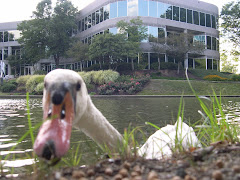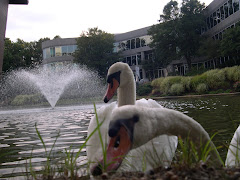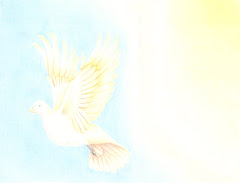The Jewish Wedding Ceremony (see link next)
http://ohr.edu/yhiy/article.php/1087 By Rabbi Mordechai Becher
A new blogger friend of mine, Tamela, from http://tamelasplace.blogspot.com/ Tamela's Place had mentioned the idea of the Jewish Wedding Ceremony as having parallels to Christ’s reception of the church. I have read a few online articles and even Wikipedia’s explanation of the Jewish Wedding Ceremony since Tamela brought this topic to my attention. The article that I am pulling parallels to Christ’s reception of the church from had, what I felt was the best imagery to Christ’s reception and the defense of the church.
Because this is a Jewish ceremony, you will, of course understand why Rabbi Mordechai Becher does not refer to New Testament Scripture. However, I have given my interpretation as to how some of the Jewish Wedding Ceremony parallels New Testament scripture. Below the quoted and italicized text, you will find my interpretations to the New Testament relationship of the Church and her relationship to Christ.
Please feel free to add your thoughts in the comment section. I may try and work them into the text and give credit to your contributions.
“In traditional Jewish literature marriage is actually called kiddushin, which translates as "sanctification" or "dedication." "Sanctification," indicates that what is happening is not just a social arrangement or contractual agreement, but a spiritual bonding…. "Dedication," …of the bride and groom to each other, to the extent of them becoming, as the Kabbalists state, "one soul in two bodies."”
“shidduch
The very first stage of a traditional Jewish marriage is the shidduch, or matchmaking. This means that the process of finding a partner is not haphazard or based on purely external aspects. Rather, a close friend or relative of the young man or woman, who knows someone that they feel may be a compatible partner, suggests that they meet”.
I viewed this as God’s involvement, to make the introduction of His son to the human family.
“vort - engagement
When the families have met, and the young couple has decided to marry, the families usually announce the occasion with a small reception, known as a vort. Some families sign a contract, the tenaim, meaning "conditions," that delineates the obligations of each side regarding the wedding and a final date for the wedding. Others do this at the wedding reception an hour or so before the marriage. One week before the wedding the bride and groom, the chosen and kallah, stop seeing each other, in order to enhance the joy of their wedding through their separation”.
I felt that John 14:28 is the ‘arch type’ to this part of the Jewish Wedding Ceremony. For Jesus says, “
John 14:28
28"You heard me say, 'I am going away and I am coming back to you.'
36Simon Peter asked him, "Lord, where are you going?"
Jesus replied, "Where I am going, you cannot follow now, but you will follow later."
“bedekin
After the signing of the ketuvah, which is usually accompanied by some light snacks and some hard liquor for the traditional lechaims (the Jewish salute when drinking, which means, "to life!"), the groom does the bedekin, or "veiling." The groom, together with his father and future father-in-law, is accompanied by musicians and the male guests to the room where the bride is receiving her guests. She sits, like a queen, on a throne-like chair surrounded by her family and friends. The groom, who has not seen her for a week (an eternity for a young couple!), covers her face with her veil. This ceremony is mainly for the legal purpose of the groom identifying the bride before the wedding”.
Another blogger friend of mine, http://walkingbyfaithdownaisle15.blogspot.com/ Barbara commented to add this to the Bedekin phase of the Jewish Wedding Ceremony. She said within the Bedekin phase, just before the ceremony, the bride and groom meet face-to-face, in which the couple has a moment together to varify their intentions before the ceremony. I can see this as being part of what Rabbi Becher describes when he introduces the groom taking the opportunity to identify his bride. And then, ofcourse, whether it be for a year or a week long period of separation prior to the ceremony, the Groom stating his intentions to marry her, as well as asking the bride if she intends to mary him.
Barbara felt their to be significance to this 'later stated' portion of the Bedekin. As I considered it a second time, I thought of how Jesus, The Messiah came to the Jews and spent time with them. He stated His intentions and revealed Himself to be whom they had been looking for. With all of the 'types', those things of the Old Testament that point to His coming, and the prophecies telling of how He will come, they refused to believe in Him. And to this day, as a nation and a culture, they do not accept Him to be their Messiah. They refused to commit to the 'Wedding Ceremony'.
The unveiling:
This part of the ceremony struck me as important to interpret for a parallel. However, I am not sure of what to make of it. If I am reading into it more than I should, what I feel it says of Christ, is that He will come back and take His bride, the church. And, the time between His departure and when He arrives is to identify all who have died in Christ and those who will be “caught up” as Paul says.
“chuppah
The next stage is known as the chuppah, or "canopy." The chuppah is a decorated piece of cloth held aloft as a symbolic home for the new couple. It is usually held outside, under the stars, as a sign of the blessing given by G-d to the patriarch Abraham, that his children shall be "as the stars of the heavens." The groom is accompanied to the chuppah by his parents, and usually wears a white robe, known as a kittel, to indicate the fact that for the bride and groom, life is starting anew with a clean white slate, since they are uniting to become a new entity, without past sins…
When the bride arrives at the chuppah she circles the groom seven times with her mother and future mother-in-law, while the groom continues to pray. This symbolizes the idea of the woman being a protective, surrounding light of the household, that illuminates it with understanding and love from within and protects it from harm from the outside. The number seven parallels the seven days of creation, and symbolizes the fact that the bride and groom are about to create their own "new world" together.
Here, in these last two paragraphs, I think we can see the symbolism for the Kingdom of Heaven and the union of Christ to His bride, who is the church. It is a ‘Holy’ relationship of which the church has obtained perfection in the first paragraph.
The second paragraph, borrowing from the imagery of a household (in the first paragraph) as the Family or “House” of God, is the Family represented by the Bride. She is keeping watch for the Groom (The Lord) as he prays for those who have not yet come into a relationship with The Father.
http://www.biblegateway.com/passage/?search=mark+14:32-42(From Mark 14:37)
You see, Christ demonstrated His defense of the House of God when He drove the merchants from the Temple. The Temple does not exist today, as The Church is the House of God. I think the lesson we ought to learn is that Christ wants us to be more assertive in defending God’s family. The cleansing of the Temple by Jesus is the only time in the gospels, that we see Jesus so aggressive and tenaciously defensive.
In that day, when Christ walked into the Temple, He discovered the merchants having made a market in the Temple, as they were exploiting the worshipers. This is what we see occurring in the Church today. We have all manner of wills, perching in the church, corrupting it and misleading the people of God into a false relationship with God. These people have been successfully waging their campaigns to change the Image of God’s Family by insertion of errant theology. And this has been accomplished as we have not been able to keep watch. Christ’s question to his disciples in Mark 14:37 seems to me to have been a prophetic statement.
Under the chuppah, an honored Rabbi or family member then recites a blessing over wine, and a blessing that praises and thanks G-d for giving us laws of sanctity and morality to preserve the sanctity of family life and of the Jewish people. The bride and groom then drink from the wine. The blessings are recited over wine, since wine is symbolic of life: it begins as grape-juice, goes through fermentation, during which it is sour, but in the end turns into a superior product that brings joy, and has a wonderful taste. The full cup of wine also symbolizes the overflowing of Divine blessing, as in the verse in Psalms, "My cup runneth over."”
In the wine, we see the perfect creation man once was. We see the corruption of man. And, we see, throughout the redemptive process, a final stage of completion in which there is joy and gladness, where the wrought and fermentation has passed.
kiddushin
The groom, now takes a plain gold ring and places it on the finger of the bride, and recites in the presence of two witnesses, "Behold you are sanctified (betrothed) to me with this ring, according to the Law of Moses and Israel." The ring symbolizes the concept of the groom encompassing, protecting and providing for his wife.
Here, I see the role of the groom, being as Christ is to the Church (the Bride). As Christ demonstrated and insisted of His disciples, we ought to guard and care for the Family of God. His Church, His Bride.
sheva brachos
After this, the sheva brachos, or seven blessings, are recited, either by one Rabbi, or at many weddings a different blessing is given to various people the families wish to honor. The blessings are also recited over a full cup of wine. The blessings begin with praising G-d for His creation in general and creation of the human being and proceed with praise for the creation of the human as a "two part creature," woman and man.
I have not come to any conclusions on this phase. In some ways, it appears obvious that it needs no interpretation. And then, I feel that there is something more. Any ideas?



















15 comments:
This is interesting from the same site:
ohr
Yeah, Russ. This is interesting. I read it. I really did not see a problem with the piercing, bound comparison. If you think about it, Jesus was bound to the cross by having His hands peirced.
I will be doing some research on this article tomorrow. It is almost midnight here.
Thanks.
And thanks for the promotion for the second time. I am beginning to feel as if I may have something to offer. However, it is only because of your education that acknowledges my simple thoughts that I feel this way.
Thanks again.
Well, we need networking and continued learning.
I respect Jewish scholars and appreciate their understanding of the Hebrew Bible. There are also fine Christian scholars of the Hebrew Bible.
I am not convinced that the New Testament can be explained away as not being a progressive and final revelation following the Hebrew Bible.
Thanks, Jim.
You got right on that! You gave some good info. and made some exceptional comparisons. I love the Word of God and it is exciting to me when you find others who love it as well and love learning of it. I have found a lot of times though the more i learn of God's Word the deeper God gets! Maybe that is where the scripture comes in that says: "The deep calls to the deep!" God is Awesome!
Here is some more info. if you are interested, you might have already seen it though but i thought i would give you the link just in case. This was written by a Messianic Jew. He begins by talking about the Jewish wedding and customs and then he brings it together (as you did) with Christ and His Bride.
Here is the link:
http://www.biblestudymanuals.net/jewish_marriage_customs.htm
God bless you and all your studies of Him and for His glory!
Thanks Tamela,
No, I had not seen this article on the Jewish Wedding Ceremony.
I can see some similarities in what I had read, even what I had stated in my analysis.
There were some different facts. The twelve month separation in this article is only a period of seven days separation in the article I pulled from. These are some of the reasons we have to read more than one study on the subject. People can be harsh critics if they find (say) my information to be wrong compared to three or four other studies.
In this one example, I would honestly have to read more on the subject to know if it were seven days, or twelve months.
I look forward to being able to read more of your studies and share comments.
Thanks a bunch.
Jim
Thaks Russ, for your positive comments about the Jewish faith and our need to network and learn. It is awsom to be able to network in such a way.
I remember when internet first came out. My former land lady whom is a beautiful Christian home to be with the Lord, said, "The Devil can't have everything". She was stating that as far as she is concerned, the world of evangelism just became a little smaller with a broader reach.
Hi,
A friend gave me Judaism for Dummies :) Under Bedeken this is what it says: Just before the ceremony, the kallah and chatan(bride and groom) meet face-to-face in a short ceremony called a bedeken (adorning), in which the couple has a moment together to affirm their intentions just before entering the ceremony. Maybe this will help you. I will ponder where we see this in scripture. B
This is great reading. I'm glad that you did not have a link as you did a comparison to Christ and His Bride, the Church.
I'm glad because you stretched your thoughts and came to some wonderful conclusions. Now you can go read the link that Tamela provided and probably add to your knowledge.
Loving you and missing you. Your Wife
Hi Barbara,
Yes, I read this and I was stumped. However, now that you have mentioned it, the thought occurred to me that this could be Christ's appearance to Israel.
The scripture does say much about Israel's expectation of The Messiah and Israel's decission to abandon the notion of Jesus being their Messiah, their groom.
I will have to work this into the text after work today. This, ofcourse would be a suggestion. Thanks for mentioning it to me again.
I will credit you with stating your feeling for significance on this.
Hi Hun,
Actually, I provided a link. It is the Rabbi's name at the very top. However, it gives no New Testament parallels. After all, this is a Rabbi's message of the Wedding Ceremony.
I love to attempt applying my thoughts on Biblical imagery.
The recent debate I sent to you will be my s&t article Aug 1.
I am a member of the Evangelical Theological Society, and the Evangelical Philosophical Society.
I joined these as two PhDs from church advised me to in order to bolster my CV.
Russ:)
Russ,
I will be sure to look for it.
I am glad God used what I wrote to inspire that thought. I saw this on the www. It talks more in general about the wedding. Who knows it may stir up more ideas?
http://www.cmadunedin.org/pg38jewishwedding.htm
I use this verse in a talk about the veil.
Now we see but a poor reflection in a mirror but then we shall see face to face. Now I know in part, then I shall know fully, even as I am fully known.
The real turtle Bandit found truthfully shook me up. My delay was not pleasing Him at all. I have made major progress today in doing what He has asked me to do. I hope to finish up tomorrow. The good news is that God wants to do something really incredible with my life. My part is to walk it out. None of the things He is asking me to do look possible in the natural. That's why I can only walk by faith. My neck is out again. I am getting ready for the wedding.
Great thoughts and interesting post brother. I really enjoyed reading your blog. I hope you have a great week.
I wrote the following as an addition to what Barbara suggested.
"And then, ofcourse, whether it be for a year or a week, the Groom stating his intentions to marry her, as well as asking the bride if she intends to mary him".
"whether it be for a year or a week..."?
I'm certain I have lost readers on this blunder.
I wrote as if someone was going to remember that the Jewish custom after making the engagement official, involved a time of absense. The absence could be one week prior to the wedding. Or, it could have been as long as a year.
Sorry. But, it did give me a chuckle.
Post a Comment